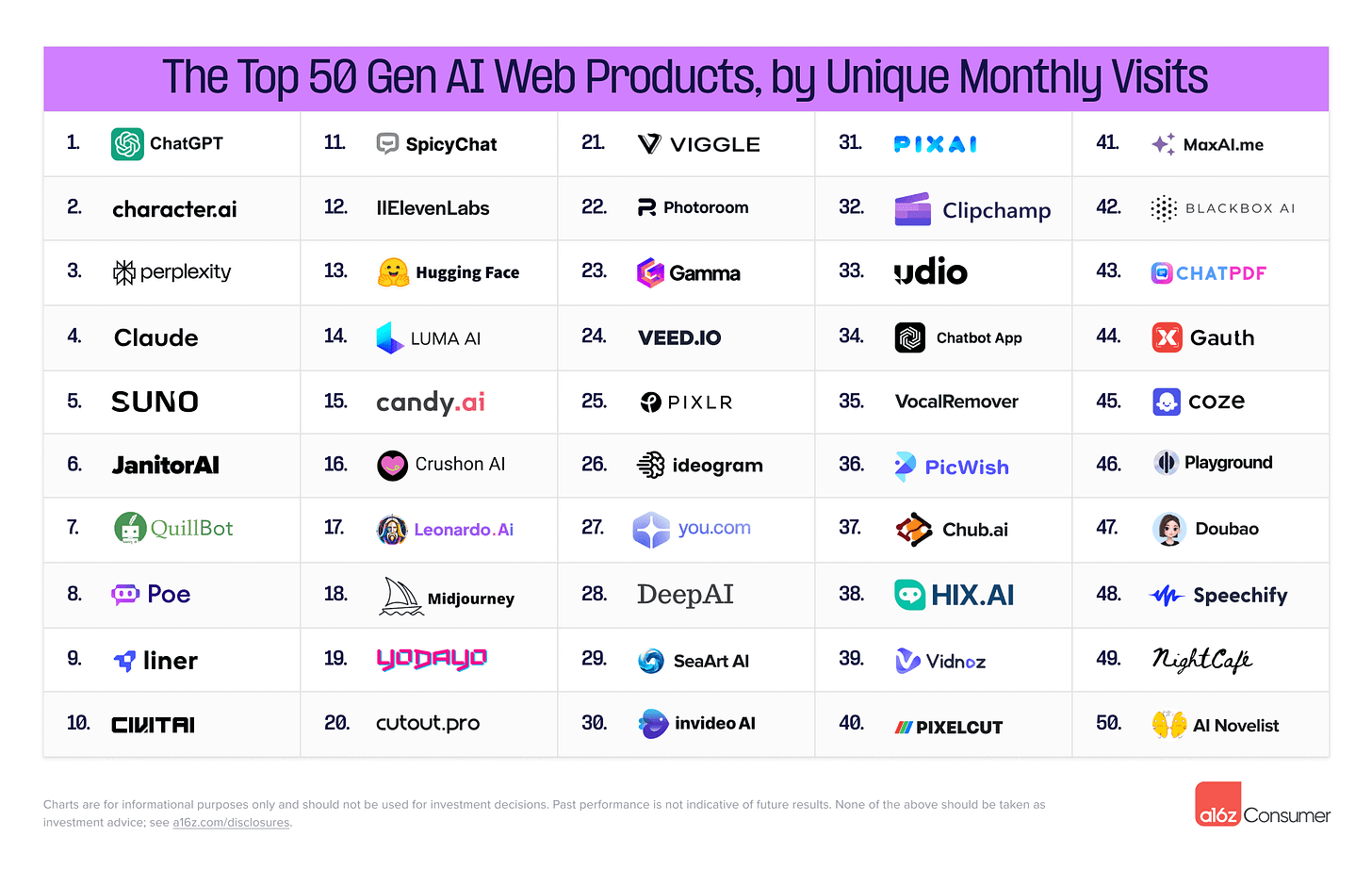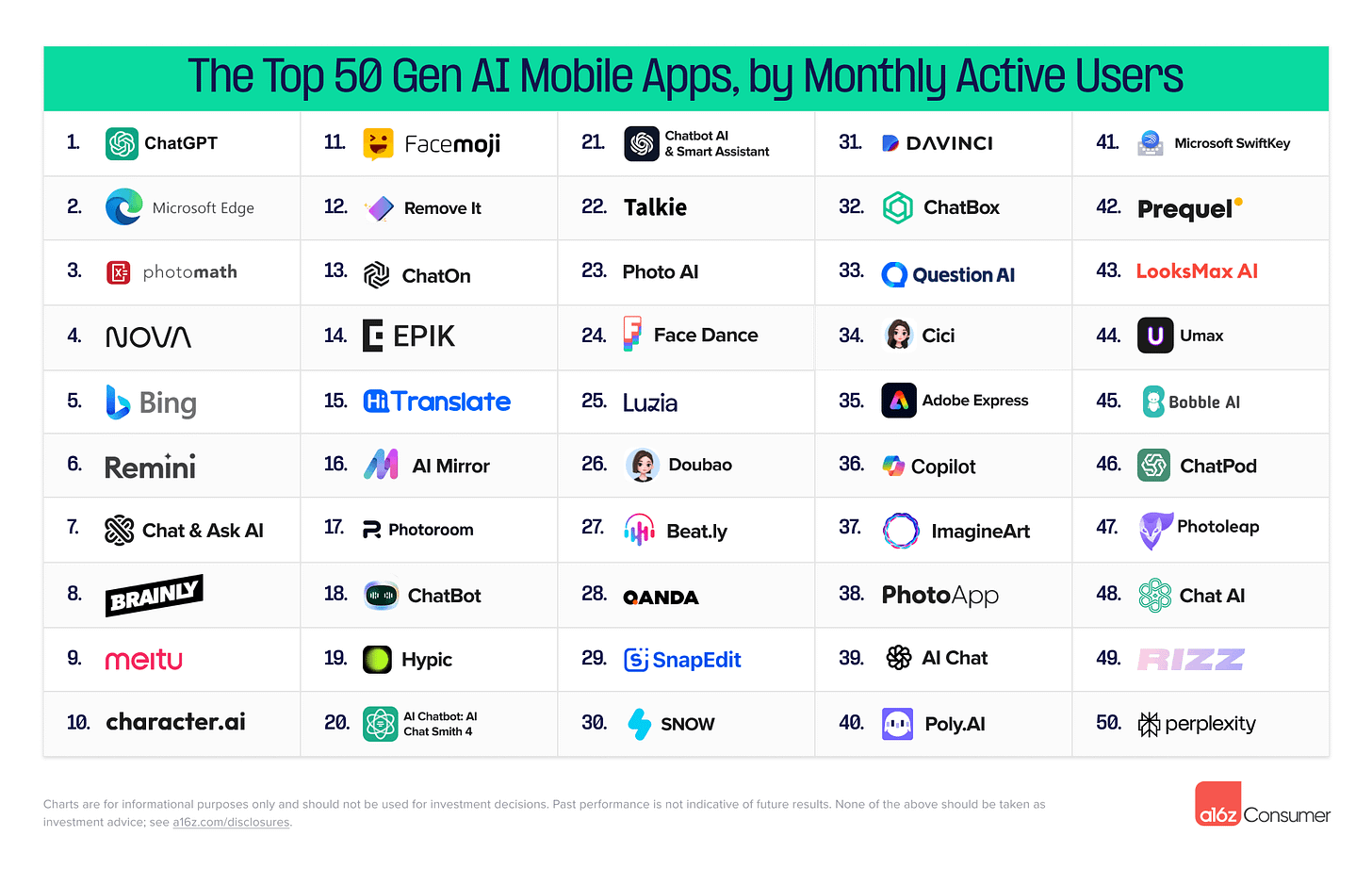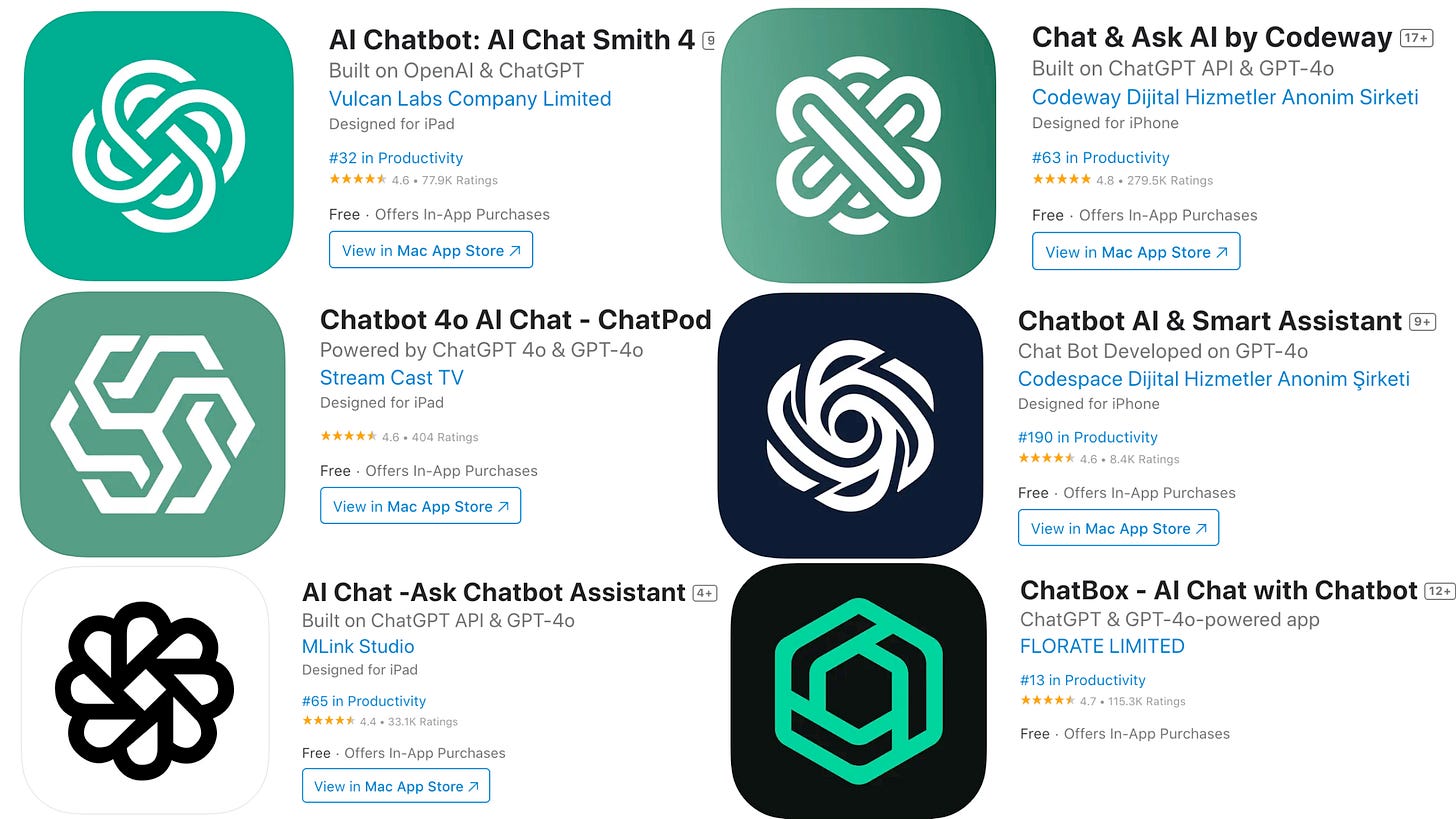Insights from the top 100 Gen AI consumer apps
You don’t need the best model to be successful
On August 21st, A16Z published its latest report of the top 50 AI-first web products (by unique monthly visits) and top 50 AI-first mobile apps (by monthly active users). It’s no surprise that OpenAI’s ChatGPT tops the list, and that many people are using Claude AI and Perplexity. However, many products on the list are not well-known to the public and don’t often appear in the headlines. So, why do they have so many users? What did they do right?
After reading the report, I went through all the products to understand the technology they’re using and the problems they’re solving. As expected, most products don’t have their own model, as training and fine-tuning a model is extremely expensive. Instead, they use APIs from OpenAI or other models and then build features on top of them. What makes them successful isn’t the technology itself, but the business strategy and the features that meet users' needs.
Imitate ChatGPT, both visually and functionally
Every time a popular app emerges, hundreds of copycats flood the app stores, using similar icons and names. Many people are misled into downloading these copycats, and people continue using them if they offer basic functionality. ChatGPT is no exception to this phenomenon. Unfortunately, this dubious strategy works, as you can see in the list of top 50 AI-first mobile apps. Just look at their icons and names—can you really tell the difference?
Improve my photos and my attractiveness
Image and video generation are impressive and seem almost magical, so no wonder products like Midjourney and Luma are popular. However, there’s also a strong demand for basic functionalities, such as easily removing image backgrounds. Many products in the list, such as Pixelcut, Pixlr, SnapEdit, and Remove It, have gained a large user base by offering simple, user-friendly photo editing tools. People love taking and sharing photos online, and if you can simplify this process, you’ll attract many users, regardless of the technology you’re using.
Another thing people care about is their appearance. "Do I look attractive?" is a concern for many men and women. Before the advent of AI, people would post their pictures online and seek ratings. AI now offers a new way for people to judge themselves. LooksMax AI and Umax have gained popularity by simply offering one key feature: analyzing your selfie and providing advice on how to enhance attractiveness.
Get me a girlfriend / boyfriend
When I tried to open JanitorAI at the office, I got a browser warning that our company had blocked all NSFW content. This gave me a vague idea of what this site was about. With the advent of Large Language Models, we can now have human-like conversations with chatbots, leading to the development of AI girlfriends and boyfriends. SpicyChat, Candy.ai, and Crushon AI—just from their names, you can guess what services they offer. Some of these are even more popular than the well-known Midjourney and Hugging Face.
AI companions are very appealing because they’re always available and don’t have their own emotions. They can be a great help when people feel lonely, especially in the post-COVID world. Loneliness has become a big market opportunity for AI products. However, this new dynamic could dramatically alter our relationship with other humans and society, which poses significant risks.
Products from Chinese companies
TikTok’s parent company, Bytedance, is a Chinese company, but people in China are blocked from using TikTok and can only access 抖音 (Douyin), the Chinese version of TikTok. This strategy allows Bytedance to apply strict censorship to Douyin without affecting TikTok. To survive in the Chinese market, many companies, including LinkedIn and Duolingo, have adopted this best practice from Bytedance.
Several popular AI products on the list are from Bytedance, such as Gauth and Coze. Another product, Question AI, is from a different Chinese company, Zuoyebang. Talkie, meanwhile, is owned by the Chinese tech company MiniMax. However, if you visit the products’ websites, you won’t find any information about the teams behind them, and all these products are released by companies registered in Singapore, not China. This seems to be a trend for Chinese AI companies: register in Singapore, release products for overseas market, and block access to the products within China.
Although AI is still in its early phase and many of these popular Gen AI products may fail quickly, this list from A16Z is nonetheless insightful. Not every company can develop state-of-the-art models or have an unbeatable technological advantage, but companies with smart business strategies and user-focused features can still succeed in the market—just as they did in the era before AI.




